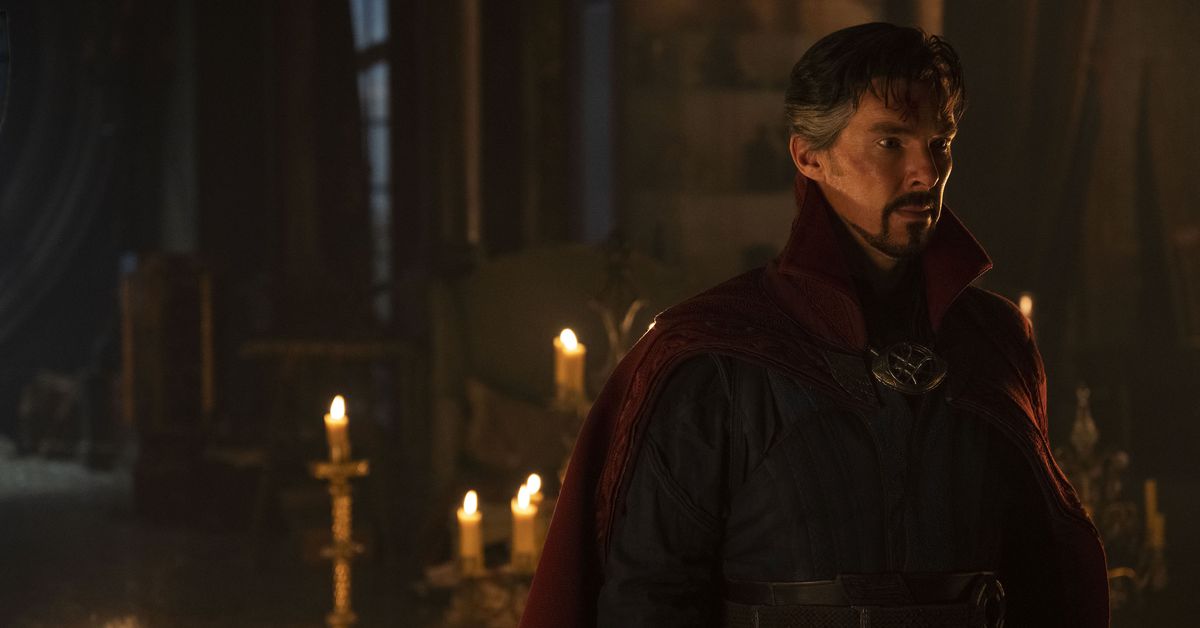
Like the previous Marvel Cinematic Universe film starring arrogant sorcerer Stephen Strange, Doctor Strange in the Multiverse of Madness is directed by a filmmaker with an established presence in horror. For 2016’s Doctor Strange, it was Sinister and The Exorcism of Emily Rose writer-director Scott Derrickson. This time around, it’s legendary director Sam Raimi, who, before he made history with the first Spider-Man trilogy, was widely known for his Evil Dead trilogy of horror movies, the wild comedy-horror Drag Me to Hell, and the offbeat superhero story Darkman.
In Multiverse of Madness, Raimi brings his distinct sensibilities to a franchise that isn’t ordinarily all that interested in horror. In a brief interview just before the movie’s premiere, we asked Sam Raimi: What is it about Doctor Strange that makes him such a good fit for horror?
This interview has been edited for clarity and concision.
With the Spider-Man movies, you talked about your desire to connect with the characters’ humanity. Where do you find that in Stephen Strange?
Sam Raimi: Well, I like the fact that he’s a flawed character, the way Benedict [Cumberbatch] has been portraying him, and how the Marvel movies have been presenting him. I like the fact that he’s a little proud, and his ego has grown. He’s the kind of guy that thinks he’s the only one that can do this job just precisely as it’s got to be done. He’s not really a team player. Those flaws are how the audience connects with his humanity. Even though they’re not admirable traits, it makes him human.
Both you and your predecessor, Scott Derrickson, come from horror backgrounds. What makes Doctor Strange compelling to a horror filmmaker in particular?
Reading the comic books as a kid, Dr. Strange would always fight — not just crooks and bad guys, but really spooky, magical forces that threatened either Earth or our universe. And so it was always a natural element of the comics. And that was unique to it. Maybe Batman had a little bit of it, but outside of the horror comics, this was the superhero that dealt with things that were a little scary. So having the background that Scott Derrickson had, it probably served him very well in crafting that first fine Doctor Strange movie. And my horror background really helped me with the sequences of suspense.
So what makes for a good spooky Doctor Strange sequence?
For myself, I think allowing the audience to use their imagination, giving them the proper seeds and tools to help build their own nightmare — allowing some area of the frame to be black or unknown, to let the audience use their own imagination in crafting the finished monster, so it’s a collaboration between director and audience in making the fear happen.
Your horror work in particular, with the Evil Dead films and Drag Me to Hell, can be characterized as a little mean and comedic, which also describes this version of Doctor Strange. Did you want to lean into that aspect of him?
It’s something Benedict has brought to the character, and I really enjoy it. He doesn’t suffer fools lightly. He doesn’t have patience for pretty much anybody else. That’s why the character of America Chavez, played by Xochitl Gomez, is a real breath of fresh air for the movie, because Doctor Strange really needs some slapping and some waking up. He needs to recognize that this whole ego thing is really just a front for his insecurity. And she does wake him up, she helps Doctor Strange make a small movement toward becoming slightly more open, slightly less proud, more willing to believe that others could do a good job, not just himself.
Doctor Strange in the Multiverse of Madness is now playing in theaters.
Sam Raimi on how he let Doctor Strange audiences ‘build their own nightmare’
Source: Stay Strong Philippines
إرسال تعليق